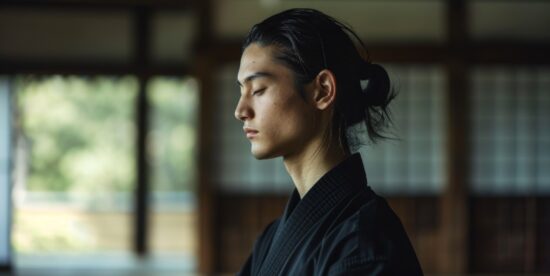Breath is life. It fuels our movements, steadies our minds, and gives rhythm to our existence. In the world of martial arts, breath control is not just a physiological necessity but an essential skill that elevates technique, power, and mental clarity. Whether you’re throwing a punch, evading an attack, or enduring a challenging sparring match, mastering your breath can make the difference between victory and defeat.
Brent Suen explores the vital role of breath control in martial arts, how it impacts physical and mental performance, and techniques to help you harness its full potential.
The Connection Between Breath and Movement
In martial arts, every movement—from a simple stance to a complex combination of strikes—is influenced by the way you breathe. Breath provides oxygen to your muscles, ensuring they have the energy required to perform. However, it’s not just about survival; it’s about optimization. Controlled breathing ensures your body operates efficiently, reducing the risk of fatigue and enhancing precision.
Proper breath synchronization with movement can:
- Increase power: Exhaling during the execution of a strike or kick channels energy and focus, maximizing force.
- Improve fluidity: Coordinating breath with movement creates a seamless flow, allowing martial artists to transition smoothly between techniques.
- Enhance stamina: By regulating your breath, you can conserve energy, ensuring you remain effective throughout long training sessions or matches.
Breath Control and Mental Focus
Martial arts are as much a mental discipline as they are physical. Controlling your breath has a profound impact on your mental state, helping you stay calm under pressure. Deep, steady breathing activates the parasympathetic nervous system, which counteracts the stress-induced “fight or flight” response.
In high-pressure situations, such as sparring or competitions, controlled breathing helps:
- Maintain composure: Shallow, erratic breathing can lead to panic. Intentional breaths keep your mind clear and focused.
- Enhance situational awareness: By calming the mind, you can better read your opponent’s movements and anticipate their next move.
- Build confidence: Controlled breathing reinforces a sense of mastery over your body, instilling confidence in your abilities.
Techniques for Breath Control
Breath control is not a one-size-fits-all practice. Different martial arts emphasize unique methods tailored to their specific needs. However, there are universal techniques that all martial artists can benefit from:
- Diaphragmatic Breathing
Also known as “belly breathing,” this technique engages the diaphragm rather than shallow chest breathing. It allows for deeper inhalations and more complete exhalations, ensuring optimal oxygen intake.- How to Practice: Sit or stand comfortably. Place one hand on your chest and the other on your abdomen. Inhale deeply through your nose, ensuring the hand on your abdomen rises while the hand on your chest remains still. Exhale slowly through your mouth.
- Exhalation During Impact
Many martial arts, such as karate and boxing, emphasize exhaling sharply when striking. This not only maximizes power but also protects the body by tightening the core.- How to Practice: Practice exhaling sharply through the mouth as you throw punches or execute kicks. The sound (“kiai” in some martial arts) reinforces focus and intention.
- Breath Holds for Stamina
Controlled breath-holding during training helps simulate high-stress scenarios and improves lung capacity.- How to Practice: During conditioning exercises, practice holding your breath for short intervals. Gradually increase the duration as your endurance improves.
- Box Breathing for Focus
Popular among athletes and military personnel, this technique enhances focus and calms the nervous system.- How to Practice: Inhale for four counts, hold your breath for four counts, exhale for four counts, and pause for four counts before repeating.
Breath Control Across Martial Arts Disciplines
Each martial art integrates breath control in unique ways:
- Karate and Taekwondo: Emphasize the sharp “kiai” during strikes to channel energy and intimidate opponents.
- Judo and Brazilian Jiu-Jitsu: Focus on calm, steady breathing to conserve energy during grappling exchanges.
- Tai Chi and Aikido: Highlight slow, deliberate breathing to harmonize with fluid movements and maintain a meditative state.
- Muay Thai and Boxing: Prioritize breath timing to match the rhythm of strikes and defensive maneuvers.
The Consequences of Neglecting Breath Control
Failing to control your breath can have significant consequences, both physically and mentally:
- Fatigue: Inefficient breathing leads to quicker energy depletion, leaving you vulnerable.
- Tension: Holding your breath unnecessarily creates tension in your muscles, restricting movement and slowing reaction times.
- Panic: In stressful situations, shallow breathing can exacerbate anxiety, clouding judgment and hindering performance.
The Role of Breath in Mind-Body Connection
Beyond the technical advantages, breath control reinforces the mind-body connection that is central to martial arts. Mindful breathing serves as a bridge between physical exertion and mental discipline, fostering a holistic approach to training.
In meditation practices often integrated into martial arts, such as zazen in Zen Buddhism, breath is a focal point. This meditative breathing sharpens self-awareness, allowing practitioners to enter a state of “flow” where actions become instinctive and effortless.
Mastering breath control in martial arts is not just a supplementary skill—it is foundational. It enhances power, improves stamina, calms the mind, and deepens the connection between technique and intention. By dedicating time to refining your breath control, you can unlock new levels of performance and resilience in your martial arts journey. Whether you’re a seasoned practitioner or a beginner, remember this: your breath is your greatest ally. Learn to control it, and you’ll control not just your movements, but also your mind and spirit.
